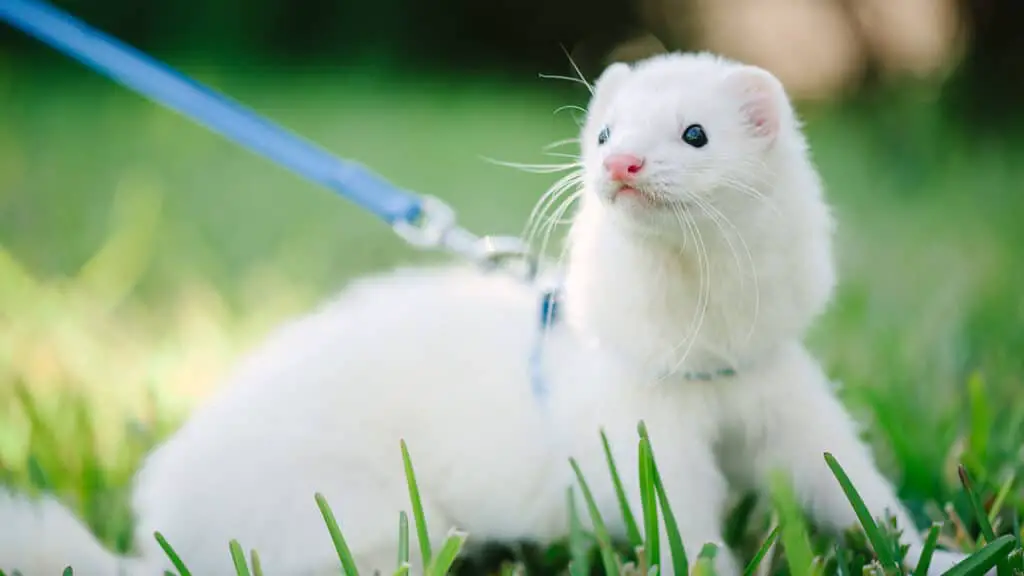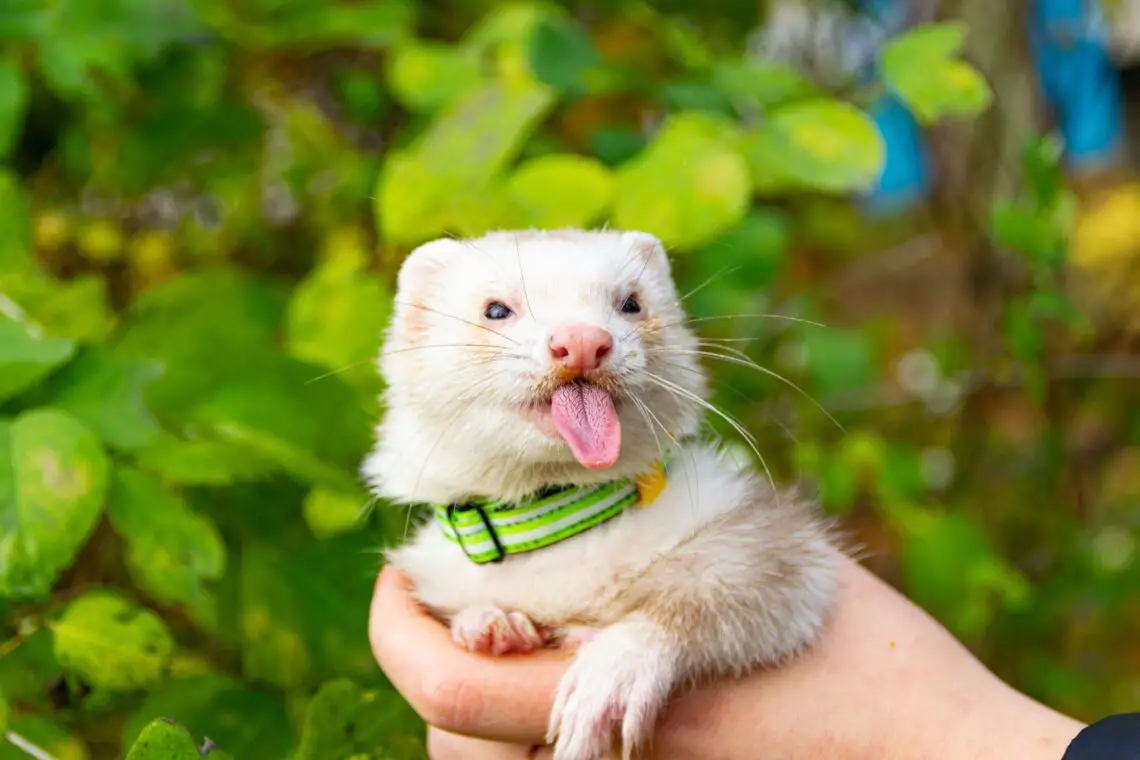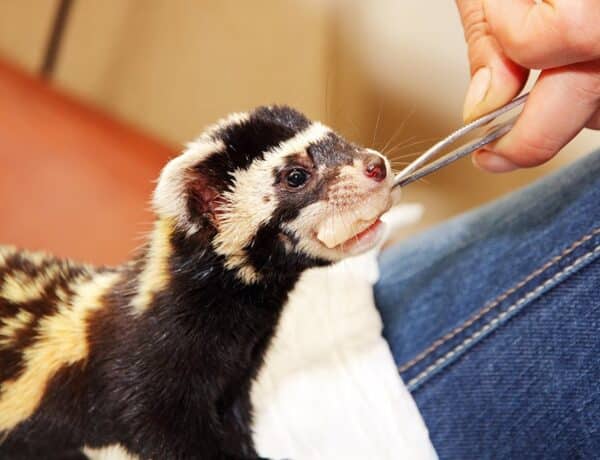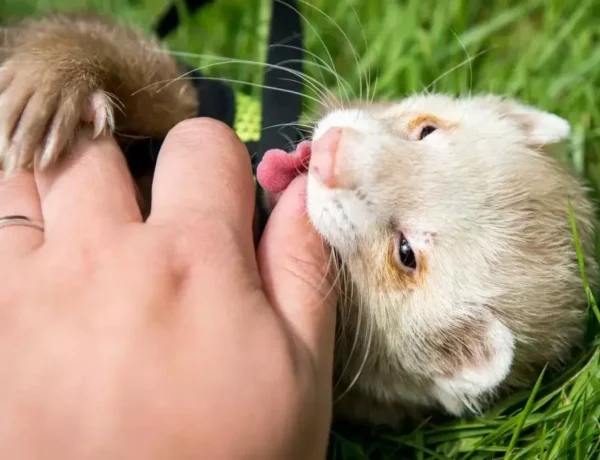Introduction
How To Train A Ferret: Ferrets are playful, curious, and incredibly intelligent creatures that make for delightful and endearing pets. However, their mischievous nature can sometimes lead to challenging behaviors that may require training to ensure a harmonious relationship between ferret and owner. Training a ferret can be a rewarding and enjoyable experience that strengthens the bond between you and your furry friend. From teaching them basic commands to addressing common behavioral issues, we’ll explore the fundamentals of ferret training, emphasizing positive reinforcement and patience as key principles in achieving success. In the following sections, we will delve into the essential aspects of ferret training, covering topics such as litter box training, leash training, and socialization. By the end of this guide, you’ll be well-equipped to embark on a fulfilling journey of training and enriching the lives of your ferrets mice and yourself. So, let’s get started on the path to a well-behaved and contented ferret companion.
Ferrets, with their charming personalities and boundless energy, have endeared themselves to pet owners around the world. These small carnivores are known for their inquisitive nature and penchant for exploring every nook and cranny of your home. However, this curiosity can sometimes lead to behavior that may be deemed undesirable in a domestic setting. To ensure that your ferret can comfortably coexist with your family and other pets, it’s crucial to provide them with guidance and structure through training. Training a ferret is not about suppressing their natural instincts or diminishing their playfulness; rather, it’s about channeling their energy in constructive ways and establishing clear boundaries. This not only fosters a harmonious living environment but also promotes your ferret’s physical and mental well-being.
Throughout this guide, we will delve into the specifics of ferret training, including the importance of consistency, positive reinforcement, and understanding ferret body language. We will cover various aspects of training, from teaching basic commands like “come” and “stay” to preventing and addressing common behavioral issues such as biting and digging. As you embark on your journey to train your ferret, remember that patience and perseverance are key. Training any pet takes time and effort, but the rewards of a well-behaved, contented ferret are well worth it. So, let’s dive into the world of ferret training and unlock the full potential of your furry companion.

Is it easy to train a ferret?
Ferrets are very trainable, so just be patient and you will be rewarded! One of the reasons people consider owning a ferret is the popular belief that these are a low maintenance pet. This is true ONLY if you do the important initial training up front, like teaching the ferret not to nip and also to use a litter box.
The age at which you start training can greatly affect the ease of the process. Young ferrets tend to be more receptive to training and can quickly adapt to new behaviors. Older ferrets might be set in their ways and may take longer to modify their behavior.
Early socialization plays a significant role in a ferret’s receptiveness to training. Ferrets that have been well-socialized from a young age are often more adaptable and easier to train when it comes to interactions with people and other pets.
Consistency is key in ferret training. Establishing clear rules and routines and consistently enforcing them will help your ferret understand what is expected of them. Inconsistency can lead to confusion and hinder the training process.
Positive reinforcement, such as using treats or praise, is a highly effective method for training ferrets. It rewards desired behaviors and encourages them to repeat those actions. This positive approach can make training easier and more enjoyable for both you and your ferret.
How do you teach a ferret?
A few simple things, like making an alarmed, high pitched sound when bitten, holding your ferret by the scruff (the nape of the neck) and saying “no” in a very firm voice, or even hissing at the ferret when it bites will help to teach your ferret that nipping people and other things (like furniture) is wrong.
Ferrets respond exceptionally well to positive reinforcement. Offer treats, praise, and affection as rewards when your ferret follows a command or exhibits a desirable behavior. Be consistent with your rewards to reinforce the behavior you want.
Set clear and consistent rules for your ferret’s behavior in your home. For example, designate a specific area for play, train them not to bite or scratch aggressively, and establish a routine for feeding and potty breaks.
If you plan to take your ferret outside on a leash, introduce the harness gradually. Start by letting them wear it indoors to get accustomed to the feeling. Then, attach the leash and allow them to explore under your supervision. Reward them when they walk comfortably with the leash.
Litter box training is essential for maintaining a clean and hygienic living environment. Place a litter box in a consistent location and encourage your ferret to use it after meals or when they wake up. Be patient and consistent with this training, and use rewards for successful use of the litter box.
Do ferrets ever cuddle?
Many ferrets like to snuggle with their humans. One thing you can try is getting a hoodie with a front pocket. Your furry little pal may like to curl up in there as you’re relaxing. You can also lie down on the floor with a blanket.
Physical Contact: Ferrets are social animals that enjoy physical contact with their owners and other ferrets. They often engage in activities like wrestling and play-fighting, which may resemble cuddling in their own way. During these interactions, they may nuzzle, lick, or simply rest beside you or other ferrets.
Sleeping Together: One of the most endearing ways ferrets show affection is by sleeping together in cozy piles. Ferrets are crepuscular, which means they are most active during dawn and dusk, but they can also be quite active at night. However, they appreciate warmth and companionship, and you’ll often find them cuddled up with other ferrets or even with you when they’re tired.
Cuddly Ferrets: Some ferrets are naturally more cuddly than others. Their individual personalities play a significant role in how they express affection. Some ferrets may seek out your lap for snuggles, curl up under your blankets, or rest their heads on your shoulder.
Body Language: Understanding ferret body language is key to recognizing their affectionate behaviors. When a ferret wants to cuddle, they may approach you with a relaxed posture, wagging tail, and gentle nibbles. They might even groom you, which is a sign of trust and affection.
Can ferrets survive alone?
Ferrets don’t cope well living alone and should be kept in pairs or groups. You’ll often find them having an impromptu play, charging around their enclosure and springing at each other. One thing’s for certain, they always choose to snuggle together in a big pile when they sleep.
Domestic ferrets have been bred for centuries to be companion animals, and they have lost many of the survival skills and instincts of their wild counterparts. This makes them ill-equipped to fend for themselves in the wild.
Ferrets are naturally social creatures. In the wild, they thrive in family groups and rely on the collective efforts of the group for hunting and protection. In a domestic setting, they seek companionship and can become lonely, anxious, or even depressed when left alone for extended periods.
Domestic ferrets do not have the hunting skills or instincts needed to catch prey in the wild. They are entirely dependent on their owners for food, shelter, and care.
Ferrets are small and vulnerable animals, especially when outdoors. They can fall prey to larger animals, face exposure to harsh weather conditions, or become injured easily.
Domestic ferrets thrive in an environment that provides them with proper nutrition, medical care, and a safe, comfortable living space. Without these essentials, their health and well-being can deteriorate rapidly.
Can a ferret learn its name?
As with training a dog, the best place to start is by getting the ferret to recognize her name and respond to it. To do this, say the ferret’s name over and over again. When your ferret finally looks up at you when you say her name, reward her with a treat.
Teaching a ferret its name involves creating a positive association between the sound of its name and something rewarding. You can use treats, affection, or playtime as rewards to reinforce this association.
Repetition is key to helping a ferret learn its name. Repeatedly use the ferret’s name in a gentle and positive tone during interactions. Be consistent with the name you choose and avoid frequent changes, as this can confuse your ferret.
Be patient and give your ferret time to learn its name. It may not respond immediately, but with consistent training and positive reinforcement, it will eventually associate its name with rewards and attention.
Incorporate the ferret’s name into daily interactions. For example, when you feed them, say their name, or when you call them for playtime. Using their name consistently in context helps reinforce the association.
Are ferrets fun pets?
Ferrets have an inquisitive and playful nature. They can learn to see humans as companions and form a strong bond with their owners. This makes them a popular pet choice because of their sociable and charming character.
Ferrets are natural clowns. They possess boundless energy and love to engage in play, making them a constant source of amusement. Whether they’re performing joyful “war dances,” chasing toys, or simply exploring their environment with insatiable curiosity, ferrets are sure to bring laughter and joy into your home.
Ferrets are highly social animals that thrive on human companionship. They enjoy being part of the family and actively seek out interaction with their owners. Their enthusiasm for playtime and cuddles creates opportunities for bonding and shared enjoyment.
Ferrets are endlessly curious and love to investigate everything in their surroundings. Their exploration often leads to hilarious and unexpected discoveries. You’ll find them poking their noses into nooks and crannies, rearranging objects, and displaying a sense of adventure that keeps life exciting.
Despite their mischievous nature, ferrets are intelligent animals that can be trained to learn tricks and respond to commands. This intelligence makes them engaging companions, as you can challenge their minds with puzzle toys and interactive games.
How old is 1 year in ferret years?
To gain perspective on their life span, each year of a ferret’s life is approximately equal to 10–14 years of a human’s life. As a result, health changes can occur quickly as your ferret ages. All ferrets should have a yearly physical examination.
Ferret age, like that of other animals, is typically measured in both chronological years (the number of years that have passed since birth) and equivalent human years. Understanding the concept of ferret aging is important for providing appropriate care and recognizing the stages of their life.
Estimating ferret age in terms of equivalent human years is somewhat more complex than it is for dogs, as ferrets age more rapidly during their early years. The common approximation is that the first year of a ferret’s life is roughly equivalent to 5 to 7 human years. After the first year, ferrets age at a slower rate. It’s often said that each additional year for a ferret is roughly equivalent to 2 to 3 human years. However, this rate can vary depending on various factors, including genetics, diet, and overall care.
Ferrets, on average, have a lifespan of about 6 to 10 years. Some may live longer with exceptional care, while others may have shorter lives due to genetics or health issues. As ferrets age, they may develop age-related health concerns, similar to other pets. It’s crucial to provide regular veterinary check-ups, a balanced diet, and a safe environment to help them enjoy a happy and healthy life.
Can ferrets get jealous?
Ferrets do not usually demonstrate the jealousy that a cat or dog can when a new pet or a new child enters the home, but they will certainly know if they are suddenly getting a lot less attention from their owner, for whatever reason.
One behavior that can sometimes be mistaken for jealousy is territoriality. Ferrets are known for being protective of their possessions, such as toys, food, or sleeping spots. When a new ferret or pet is introduced into the household, the resident ferret might display possessive behaviors, guarding their belongings or favorite areas.
Ferrets are social animals that crave attention and interaction. If they perceive that another pet or person is receiving more attention than they are, they may exhibit attention-seeking behaviors, such as nudging, climbing on you, or making playful vocalizations.
In multi-ferret households, it’s not uncommon to observe behaviors that resemble sibling rivalry. Ferrets may playfully compete for your attention, toys, or other resources. While this competition can occasionally appear as jealousy, it’s usually a form of playful interaction.
Providing equal attention, training, and bonding time with each of your ferrets can help minimize behaviors that might resemble jealousy. Positive reinforcement and regular playtime can foster harmonious relationships between your ferrets.
It’s important to remember that each ferret has its own unique personality. Some ferrets may be more independent and less affected by changes in attention, while others may be more sensitive to perceived imbalances.

Conclusion
Training a ferret can be an immensely rewarding experience, leading to a harmonious and fulfilling relationship between you and your playful, curious companion. We’ve emphasized the importance of patience, consistency, and positive reinforcement in the training process. These elements serve as the foundation for fostering desirable behaviors and preventing common issues such as biting, litter box accidents, and excessive digging. Additionally, we’ve delved into various aspects of ferret training, including teaching basic commands, leash training, socialization, and mental stimulation. By incorporating these strategies into your ferret’s daily routine, you’ll not only address specific challenges but also provide a stimulating and enriching environment that keeps your ferret engaged and happy.
Ultimately, training a ferret is about more than just obedience; it’s a journey of mutual understanding and connection. Through training sessions, you’ll strengthen the bond between you and your ferret, gaining insight into their unique personality and preferences while imparting the skills and behaviors that lead to a harmonious coexistence. As you embark on your ferret training journey, remember that every ferret is an individual, and progress may vary from one pet to another. Be patient, celebrate small victories, and adapt your approach as needed. With dedication and love, you can create a rewarding partnership with your ferret that enhances both your lives for years to come.
So, take what you’ve learned from this guide, and embark on the path to a well-behaved, happy, and contented ferret companion. Your efforts will be repaid with the joy of sharing your life with one of the most charming and endearing of pets. Throughout your ferret’s life, you’ll continue to encounter new challenges and opportunities for growth. The key to success is maintaining open communication, building trust, and fostering a loving and respectful relationship. In doing so, you’ll not only achieve a well-behaved ferret but also a loyal and affectionate companion who enriches your life in countless ways. Remember, each ferret is an individual with their own personality, and the training process should be tailored to their unique characteristics.





No Comments